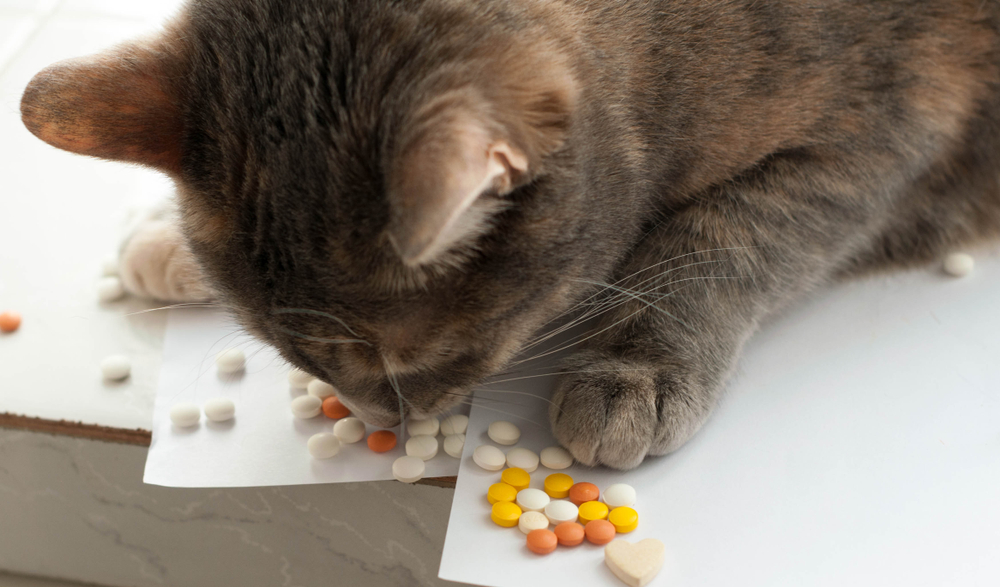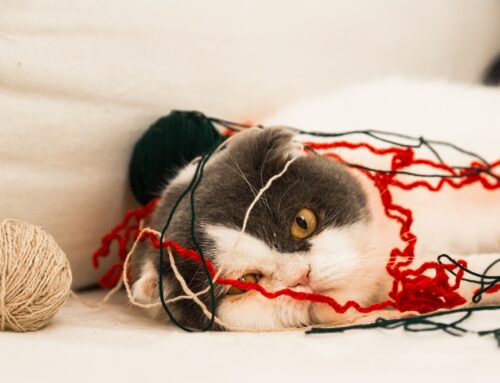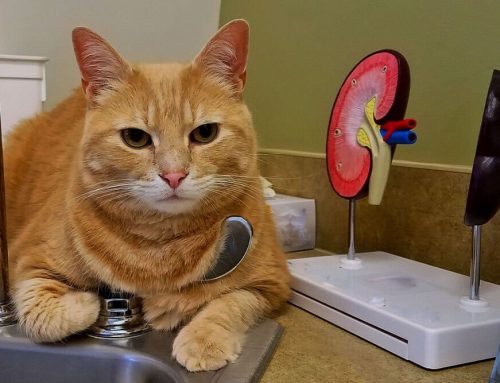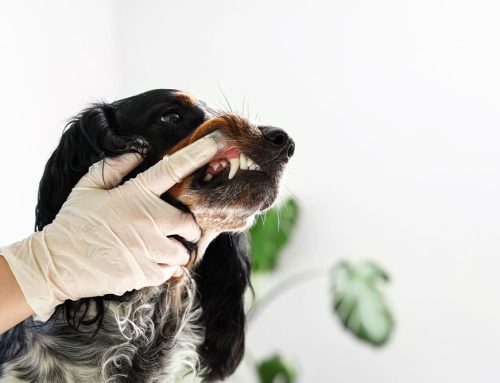You may think your home is perfectly pet-safe, but unless you have looked at your surroundings from your four-legged friend’s point of view, you are likely missing some safety hazards. To explain the importance of home pet-proofing, our MountainView Veterinary Hospital team shares three common—and scary— pet scenarios that have the potential to end badly.
Pet-proofing scenario #1: kitchen caper
Golden retriever Sully has a nose for baked goods—a quality that can get him in trouble and cause major stomach issues, if not worse. Sully’s owner is a baker and spends much of her time in the kitchen experimenting with new sweet creations. Today she is baking a decadent chocolate cake with a raisin-liqueur filling. As his owner pulls out her masterpiece, Sully weaves between her legs, drooling and hoping that something delicious will drop. To avoid a pet emergency, Sully’s owner should consider the following:
- Potential hazards — The kitchen is a deliciously dangerous place for pets, because many ingredients that make human food so tasty, such as chocolate and raisin liqueur in this scenario, are harmful for pets. Pets don’t understand this, of course, and will go to great measures to sneak a taste. A freshly baked chocolate cake cooling on the kitchen counter is going to be hard for a pet to resist, and a pet of Sully’s size can easily reach the tempting treat by standing on their hind legs. If Sully devours the entire cake, his side effects could have serious—potentially deadly—consequences.
- Pet-proofing solutions — The best way to keep your pet from getting into something they shouldn’t in the kitchen is to block their access. Baby gates placed at the kitchen entrance enable you to control if and when to give your pet kitchen access. If your home’s design prevents you from using a gate, keep your kitchen countertops clear of food, and never leave food unattended with your pet nearby. All food and baking ingredients should be stored securely in high cabinets—out of your pet’s reach.
Pet-proofing scenario #2: cleaning chaos
Gus the puppy has lived with his family for a few months, and his curiosity has kept them on their toes. Fortunately, before bringing Gus home, his owners did a lot of research and were prepared to raise a puppy. In addition, they are always careful to keep an eye on this mischievous pup. Today, however, Gus’s owners are a bit distracted as they prepare their house for a visit from the in-laws. The house is getting a top-to-bottom cleaning, and Gus isn’t quite sure what is happening. He watches as his owners open a bottom kitchen cabinet door and pull out bottles that emit sweet-smelling aromas. The pup’s owners wet the floor and use a skinny pole with hair on the end to scrub back and forth. Although Gus feels a bit light-headed, he realizes his owners are focused on cleaning, and he explores the other interesting items in the kitchen cabinet. To avoid a pet emergency, Gus’s owners should consider the following:
- Potential hazards — Many household cleaning products contain toxic chemicals—including, bleach, ammonia, chlorine, formaldehyde, phenol, and isopropyl alcohol. If your pet ingests any of these, they can develop a life-threatening illness. Remember to store all household cleaning products out of your pet’s reach.
- Pet-proofing solutions — Pets are amazingly resourceful when figuring out how to open cabinet doors. To ensure your pet doesn’t get into dangerous medications, foods, or cleaning products, install cabinet locks for added security. If you must use cleaning products that have toxic ingredients or hazard warnings, such as danger, warning, and caution, use these in a well-ventilated area, and keep your pet out of the room when you are cleaning. If you wet floors or countertops with disinfectants and cleaners, keep your pet away until these products dry. Ideally, you should rinse disinfected surfaces with water.

Pet-proofing scenario #3: medicine mayhem
Trixie the cat is a curious gal and is fascinated by her owner’s morning routine. Every day after the alarm goes off, Trixie follows her owner to the bathroom, sits on the counter, and watches her wash her face, brush her teeth, put on makeup, and take her vitamins and medicine. This morning, Trixie’s owner overslept and is rushing to get ready. She splashes water on her face, skips the makeup, quickly brushes her teeth, and pops open her medication bottle, using a little more force than usual. She hears the sound of a pill bounce on the floor—as does Trixie—and tells herself she will pick it up before she leaves the house. To avoid a pet emergency, Trixie’s owner should consider the following:
- Potential hazards — Many pet owners’ everyday rituals include taking medications or supplements. Unfortunately, pets may see these pill bottles and colorful capsules as toys or treats. All medications—including prescription veterinary medications—are potentially hazardous for dogs and cats. If your unsupervised pet ingests any medication, they can experience serious problems.
- Pet-proofing solutions — Because all medication can be lethal to pets, never give your pet a medication or supplement without your veterinarian’s instructions. In addition, keep all medications out of your pet’s reach and stored in their original containers. Before taking medication, close the door, and keep your pet out of the room to prevent them from gobbling down a dropped pill.
To avoid a scary pet emergency, ensure you are vigilant about pet-proofing around your home. However, accidents can still happen. If you suspect your pet has ingested something they shouldn’t, immediately contact our MountainView Veterinary Hospital team or the animal poison control helpline.









Leave A Comment